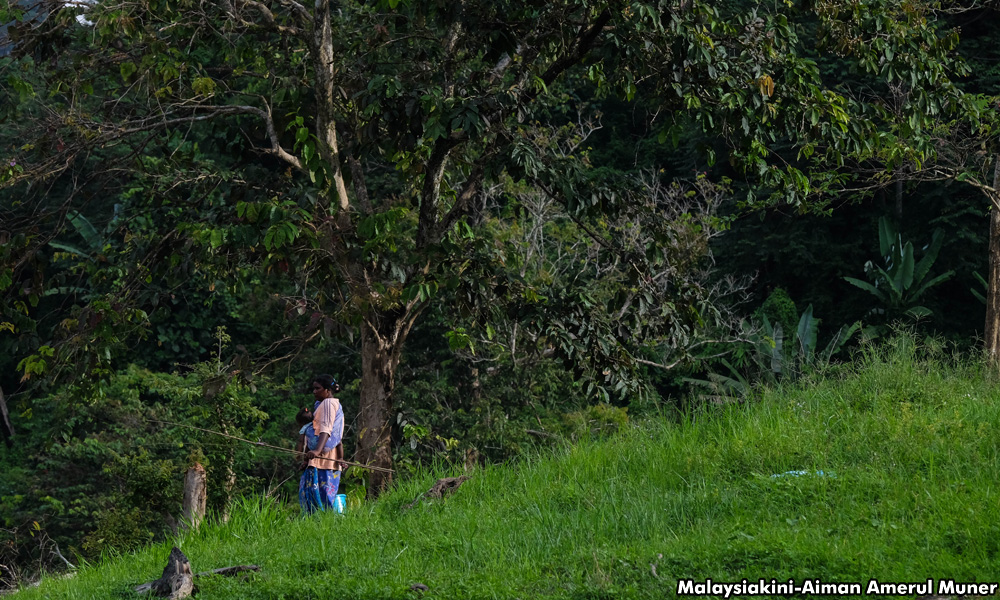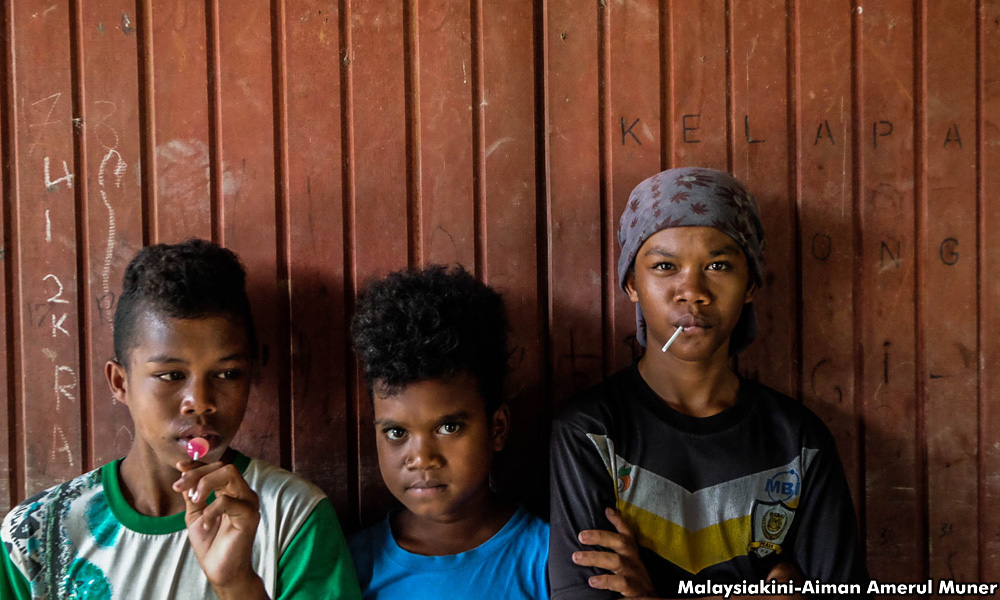The peninsula-wide primary school enrolment figure for Orang Asli pupils stands at 26,571 this year, according to statistics compiled by the Department of Orang Asli Development (Jakoa).
By comparison, their secondary school numbers are rather pathetic, registering at 13,155.
The jarring difference between the primary and secondary school enrolment implies that a substantial number of indigenous children are resisting educational advancement which in itself, is a grave issue, as dropping out of school will affect their future well-being.
The truth is, the acquisition of basic literacy alone will not facilitate the integration of the various Orang Asli ethnic groups into the mainstream of society.
Over the years, local universities have carried out a lot of research on the indigenous peoples' access to education and while various policies and strategies have been implemented to enhance their educational opportunities, the authorities have not been able to keep the staggering dropout rate in check.
Higher enrolment in Form One
Jakoa statistics, nevertheless, seem to indicate that more Orang Asli students are enrolling in Form One after completing their primary school education.
Calculating the dropout rate based on the number of Orang Asli Standard Six pupils who have registered to enrol in Form One, it (the dropout rate) reduced to 17 percent in 2016 from 20 percent, a year earlier. This year's dropout rate was between 13 and 15 percent.
However, this annual percentage does not reflect the grim reality of the overall dropout situation because not all the Orang Asli students remain in secondary school until Form Five.
A study carried out by Universiti Kebangsaan Malaysia in 2013 showed that out of 100 Orang Asli students who entered Form One, only six stayed on in school until Form Five. Those who dropped out could not be traced to find out how they have fared.
Meanwhile, according to an analysis carried out by Jakoa's education unit, out of a total of 3,200 Orang Asli students who enrolled in Form One in 2014 throughout the peninsula, only 2,062 remained in school until Form Five. This meant that 1,138 (42.12 per cent) of those students who enrolled in 2014 had dropped out of secondary school.
Senator Isa Abdul Hamid, who represents the Orang Asli communities in the Dewan Negara, said: "I would say that only half of the Orang Asli students who enrol in Form One remain in school until they complete their SPM (Sijil Pelajaran Malaysia examination)."
Speaking to Bernama when met at Kampung Baru Kuala Benut in Pontian, which is an Orang Asli settlement for members of the Kuala ethnic group, he admitted that the dropout issue was serious and that it could be attributed to many factors.
Location factor
Among the factors that keep the Orang Asli away from school is the remote location of their villages and the long distance they have to travel to get to school daily.

To overcome this problem, the government has so far built 94 Orang Asli primary schools in the peninsula that are situated close to their settlements and this has led to an increase in enrolments at the primary-school level.
However, attending secondary school is a whole new ball game for them because so far there is only one secondary school – Sekolah Menengah Kebangsaan Bawong in Sungai Siput, Perak – that caters to Orang Asli students.
On an average, an Orang Asli secondary school student would have to travel about 20 to 30 kilometres daily to go to school, a journey that would take about 45 minutes by road.
While many secondary schools offer hostel facilities, the parents of Orang Asli students are often unwilling to let go of their children.
"I know of some families who live in a remote area in Kuala Lipis (Pahang) who are reluctant to send their children to secondary schools in towns like Raub and Bentong," said Isa, adding that their feelings were understandable as many of them have never stepped out of their isolated villages.
"They worry about their children's safety and in the end, they won't allow them to continue with their secondary education."
Transport problems can also arise if the authorities have difficulties finding someone to provide transport services to the Orang Asli students, particularly those from the Negrito and Senoi communities who live in the interior areas of the jungle.
More dedicated secondary schools needed
The sole Orang Asli secondary school in Sungai Siput was opened in September 2016 to cater to students from indigenous communities in Perak and it comes complete with hostel facilities.
Stressing the importance of having dedicated secondary schools for indigenous communities, Isa said nearly 30 percent of Perak's Orang Asli dropouts returned to school after Sekolah Menengah Kebangsaan Bawong opened.
Referring to the Comprehensive Special Model School concept or K-9, he said it has also helped to deter Orang Asli students from dropping out of school.

Under the K-9 programme introduced by the government in 2013, the Orang Asli students are able to pursue their primary and lower secondary education at the same school. The K-9 schools have hostels to enable the students to stay there, thus eliminating the need for them to commute to school daily.
Currently, there are only seven K-9 schools in the country which, pointed out Isa, was insufficient to meet the needs of all the Orang Asli students.
He said among the areas greatly in need of K-9 schools was Sinderut in Kuala Lipis, Pahang.
"The primary school in Sinderut now has 450 Orang Asli pupils. As there is no K-9 school there, many of the children drop out after primary school because their parents are reluctant to send them to the secondary school which is 60 km away in Kuala Lipis," he explained.
Lack of motivation
The Orang Asli's low socio-economic status and insular existence tend to impede the educational development of the community. The elders show no interest in improving their standard of living and their children, thus, follow suit.
"Many of them are satisfied as long as their children know the alphabet and can read. They feel that since they live in the village, there's no need for their children to pursue higher studies. They still haven't realised the importance of education," Isa lamented.
This is why, he added, it was important to produce Orang Asli icons who could motivate them and act as role models.
"When an Orang Asli village manages to produce an icon who has attained educational excellence, the other villagers will also want to follow in his or her footsteps.
"As I always say, every successful Orang Asli owes it to the government and he or she must pay back to their community by motivating them to study and making them realise how important education is," added Isa.
--Bernama

